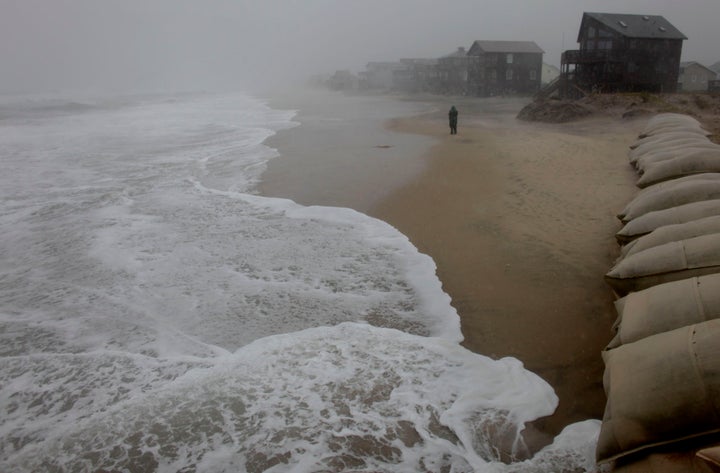
Ice sheets are now the largest contributor to rising sea levels, a new report has found. If ice sheets continue to melt at their current rates, sea levels may rise over 12 inches in the next four decades.
The study was conducted over the course of 20 years, and the results will be published in the journal Geophysical Research Letters. The group of researchers examined monthly satellite measurements between 1992 and 2009, using climate model data. The research shows that in 2006, Greenland and Antarctic ice sheets lost a combined mass of 475 gigatonnes -- this ice loss can raise the global sea level by 1.3 millimeters per year.
Unfortunately, 2006 was not just a fluke occurrence. As ScienceDaily explains, ice sheets are melting at a steadily increasing rate. Over the course of the study, the ice sheets lost about an additional 36 gigatonnes per year, compared to each year before.
Melting ice caps have often taken the spotlight, but melting ice sheets are now dwindling at a faster rate than the ice caps and glaciers. While ice sheets extend for over 20,000 square miles, ice caps are defined as areas of less than 20,000 square miles. Though melting ice caps are certainly worthy of concern, their rate of loss has been three times smaller than the acceleration rate at which ice sheets are melting.
The report’s lead author, Eric Rignot of NASA’s Jet Propulsion Laboratory, is not surprised that ice sheets will now contribute the most to sea level rise. But, Rignot remarks, “What is surprising is this increased contribution by the ice sheets is already happening. If present trends continue, sea level is likely to be significantly higher than levels projected by the United Nations Intergovernmental Panel on Climate Change in 2007.” The trends suggest that by 2050, melting ice sheets could raise sea levels by nearly six inches -- this amount is then added to predictions for melting ice caps and ocean thermal expansion. The resulting calculations find that sea levels could rise 12.6 inches by 2050.
How would these rising sea levels affect us? Another recent study, reported in the journal Climate Change Letters, shows that rising sea levels may threaten 180 U.S. cities by 2100. This study was based on projections that sea levels will rise by about three feet within the next century. Cities such as Miami, New Orleans, and Virginia Beach are expected to lose over 10 percent of their land. New York and Washington D.C. are also expected be impacted, though to a lesser degree.
U.N. reports have predicted that because of climate change, the world will have 50 million environmental refugees by 2020. That’s less than 10 years from now.
Climate change not only leads to rising sea levels, but it also is linked to droughts, flooding, and food shortages. As ice sheets melt at a faster pace, environmental refugees flee their homes, and major cities sink underwater, will climate change finally be taken seriously by everyone?